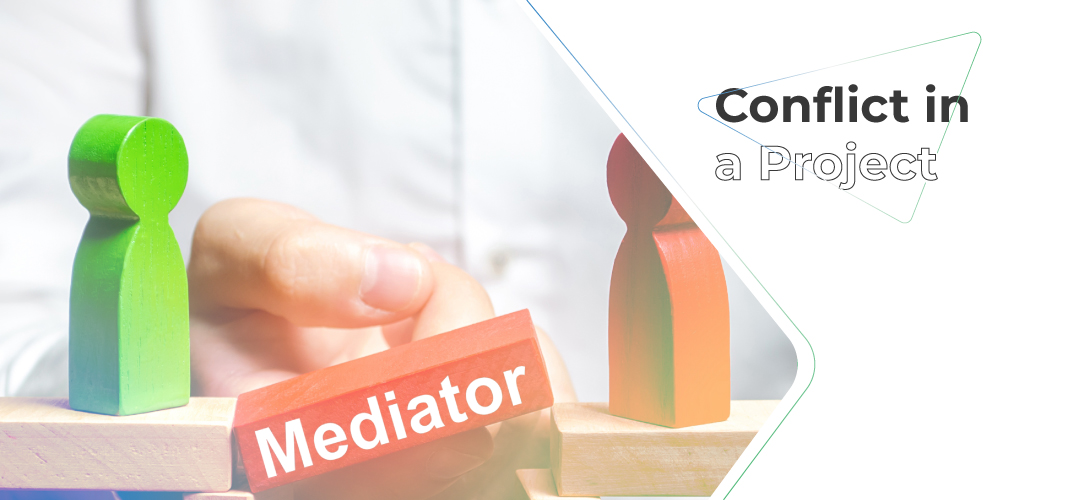How to Overcome Conflict in a Project

Being in a work environment will make us meet people who are very diverse. Starting from social backgrounds, economics, habits, to different perspectives surely color the situation in our workplace. Differences in perspective and principles owned by a person sometimes lead to the presence of conflict in the midst of work. Therefore, conflict becomes something that cannot be avoided in the work environment, both in daily activities and when working on a project.
A psychoanalyst from England, M. Esther Harding, said that "Conflict is indeed the beginning of consciousness". This phrase tries to invite us to see conflict from another perspective. The conflict that some people tend to avoid, turns out to have a deep meaning behind it.
We can interpret conflict as a process for someone to improve his abilities. Of course this can happen if we do not see conflict through a narrow perspective.
The Importance of a Conflict in a Project
When the conflict is present, don't be in a hurry to react to it with pessimism and assume that we will definitely end up in failure. Open our eyes and minds, build a perspective that this emerging conflict can be a moment for all team members to understand each other and try to find a way out together.
Conflicts that arise in the middle of a project will require everyone to find creative ways to solve problems. All parties involved will try to understand the conflict in order to find a solution. When the conflict has been resolved, of course, there will be a sense of pride over the successful collaboration of the entire team which will be a valuable experience.
Kenneth Thomas and Ralph Kilmann, researchers in the field of organization revealed that there are two tendencies of a person when dealing with conflict, namely to act assertively or cooperatively. Someone with a high level of assertiveness will prioritize conflict resolution based on his own way over others. Meanwhile, cooperative people will try to accommodate shared views and interests in dealing with a conflict.
Types of Dealing with Conflict in Projects
Thomas and Kilmann classify the various types of people when faced with conflicts that are generally carried out. The following are the types of conflict that are often done by many people:
1. Collaborating: high level of assertiveness and high cooperativeness, seeking win-win conditions for all parties involved.
2. Compromising: moderate level of assertiveness and moderate cooperation, looking for a middle ground.
3. Competing: high level of assertiveness and low cooperativeness, trying to make the method chosen as a solution.
4. Accommodating: low level of assertiveness and high cooperativeness, no ambition for the chosen method.
5. Avoiding: low level of assertiveness and low cooperativeness, tend to let conflicts continue to occur.
One thing you need to remember, avoiding conflicts or ignoring them without resolution can be fatal for the project as well as the entire team. Like a ticking time bomb, a conflict that is left unchecked will explode at any time and cause even bigger problems.
For this reason, it is very important for a company or project leader to be able to understand the conflict that is being faced and also make efforts to resolve the conflict.
Here are some steps you can take when dealing with conflicts in a project:
1. Accept that conflict does occur
You don't have to act like everything is fine. Differences of opinion or friction between employees is very normal. Acknowledging the existence of a conflict yourself is the first step before you try to find a solution.
2. Provide space for cooperation to occur
Once you know that a conflict is occurring, invite each team member to always put the common interest first. Everyone has their own opinion that deserves to be expressed. However, try to keep the ego suppressed for the good of the team in general.
3. Understand the input and views of each team member
One of the steps to finding the root cause or cause of the conflict is to understand what each member wants. However, as a leader you have to stay neutral and be able to see things more broadly.
4. Cooperation is key
Everyone on the team must understand how to prioritize common interests. That way, it will be easier for you when accompanying team members to try to find solutions that do not harm either party.
5. Take control
This is where your role as a leader becomes very important. It takes the role of someone who can make sure everyone stays on the same path. A leader is needed to be present to help the team stay focused on the main goal.
6. Take a lesson from every incident
While conflict is often unavoidable, you will also learn how to design a conducive work environment. After successfully resolving a conflict, make it an experience so as to reduce the chances of future conflicts arising.
Conflicts that arise should not be seen as a gateway to failure. However, use conflict as a way for your team to hone their skills and also make the team more solid. Therefore, you also need to know the right way to deal with it.
Handling conflicts between teams is one of the challenges in running a project. Through The Real Project Management program, you will learn basic operational and non-operational knowledge, one of which is dealing with conflicts within teams. This basic knowledge will be applied in running projects in the company.